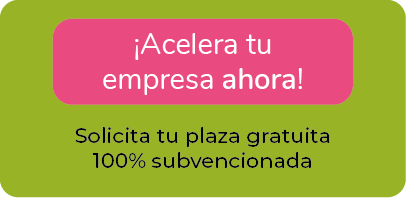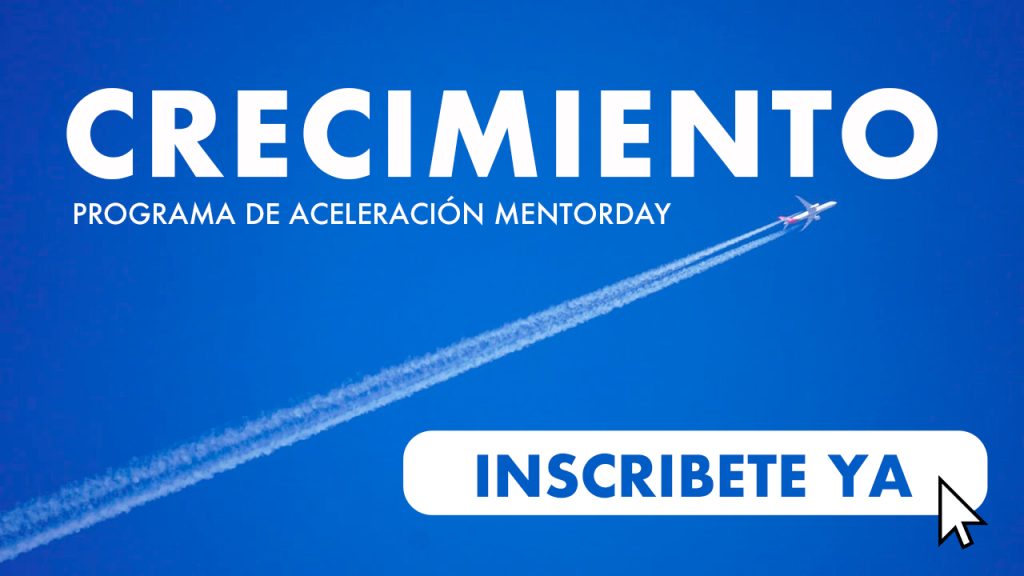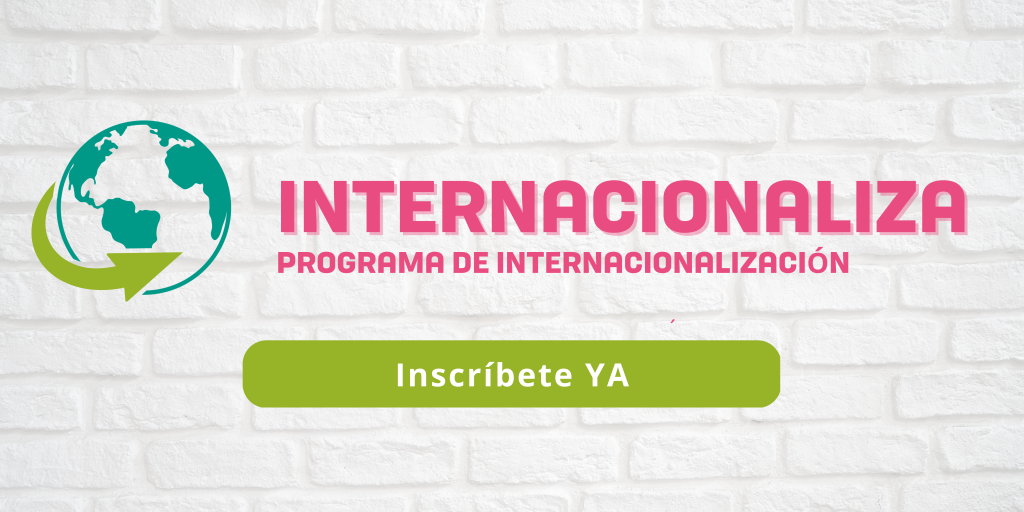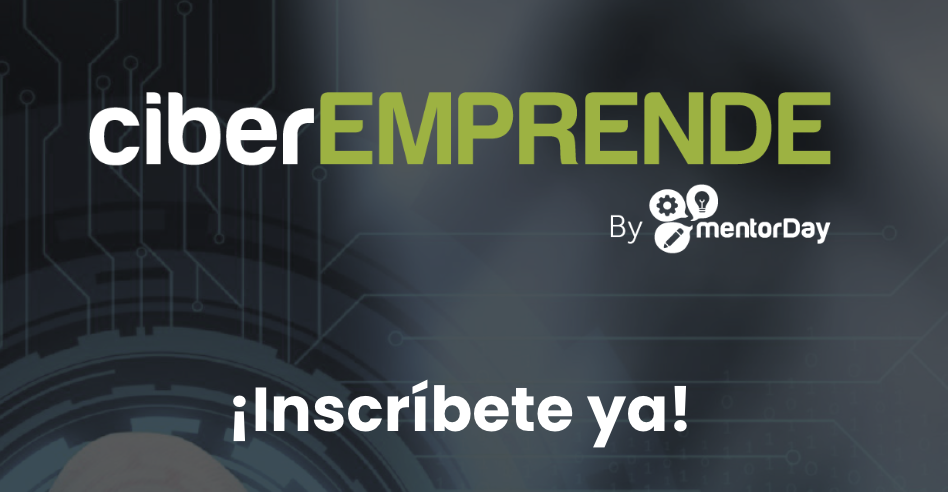MODELO CLEAR PARA ESTRUCTURAR LA SESIÓN DE MENTORING
Acelera tu empresa con estos consejos de expertos «Modelo Clear para estructurar la sesión de mentoring». ¡Analiza y descubre esta TIP!
El Modelo CLEAR, es un buen modelo para estructurar tu sesión de mentoring, es una buena guía. Creado en los años 80 por el profesor Peter Hawkins, pionero de la metodología de supervisión para coaches, consultor e investigador en «Coaching Ejecutivo, Liderazgo y Desarrollo Organizacional».
El modelo describe 5 fases de la sesión
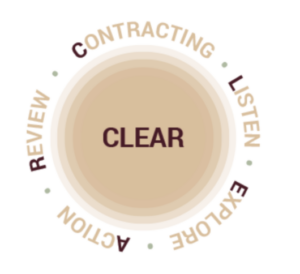
C: “Contracting” (Contratar):
El mentor apoya a su emprendedor a comprender y centrar el reto que quiere abordar, clarificar los resultados deseados, para clarificar el foco de la sesión, y a establecer juntos las bases del encuentro de mentoring.
- ¿Qué te ayuda a aprender?
- ¿Qué necesitas hoy de mi?
L: “Listen” (Escuchar):
A través de la escucha activa (ver TIP) y las intervenciones catalíticas, como por ejemplo: parafrasear, espejar, articular la intuición, y una actitud de curiosidad; acompañar al emprendedor para que aumente su comprensión de la situación y la consciencia de sí mismo.
E: “Explore” (Explorar):
Recoger el impacto emocional de la situación actual en el emprendedor y retarle a través de preguntas efectivas, brainstorming (ver TIP) o reflexión a descubrir nuevas perspectivas y opciones.
A: “Action” (Acción):
Apoyar al emprendedor a elegir el nuevo camino a seguir y a definir sus próximos pasos, incluyendo como elemento clave un “fast forward rehearsal” o “ensayo general” de la acción que va a realizar (“Dime cómo se lo vas a decir…”). (Plan de acción).
R: “Review” (Revisión):
Repasar y afianzar el plan de acción acordado, y acordar mecanismos de seguimiento. Obtener feedback sobre la efectividad de la sesión, lo que fue útil, difícil y lo que ambos quieren que sea distinto en próximas sesiones. La gran aportación de esta estructura es que refuerza la responsabilidad y el compromiso del emprendedor, en la relación con el mentor, consigo mismo y con respecto al reto que quiere alcanzar, a través de los pasos 1 y 5.
Indagar en el sentido que tiene el reto inicial para el cliente, explorar dónde reside la dificultad real, y pedirle que concrete el resultado deseado de la sesión (“si esta sesión fuera realmente útil para ti. ¿Qué tendríamos haber conseguido juntos al final de ella?”), permite a la alianza mentor-emprendedor clarificar el foco de la sesión y hace que la toma de conciencia comience en los primeros minutos del encuentro. Es importante que, se trata de un foco co-creado, a partir de la inquietud del emprendedor y la indagación y reflexión del mentor.
El paso 5 cierra el círculo, al preguntar directamente al emprendedor que evalúe hasta qué punto siente que se ha cumplido en la sesión con la expectativa inicial. Es otra oportunidad para reforzar la sensación del emprendedor de estar al mando de su proceso: medir el progreso, celebrar los logros, y verbalizar lo que no está funcionando. Aquí no se trata de colocar al mentor en la posición de “vendedor”, y el emprendedor en la de “comprador”, sino de abrir un espacio constructivo para asumir conjuntamente la responsabilidad del proceso.
ESTAS DOS FASES DEL MODELO CLEAR TAMBIÉN ESTÁN PLENAMENTE ALINEADAS CON LAS COMPETENCIAS DE MENTORING DE ICF, EN CONCRETO, CON LA COMPETENCIA:
“Establecer el acuerdo de coaching” y la competencia “gestionar progreso y responsabilidad”.
Se lo recomiendo a todos los mentores, aunque no se estén preparando para obtener la certificación.
El modelo CLEAR es una estructura para guiar y estructurar una sesión de mentoring, facilitando la conversación y el logro de objetivos.
CADA LETRA REPRESENTA UNA FASE DEL MODELO:
- C – Contracting: en esta fase se establece el contrato entre el mentor y el mentee, se define el objetivo de la sesión y los límites de la misma.
- L – Listening: el mentor escucha activamente al mentee, prestando atención a sus necesidades, preocupaciones y problemas.
- E – Exploring: se explora en profundidad el tema a tratar, se hacen preguntas para comprender mejor la situación y se analizan diferentes perspectivas.
- A – Action planning: se establecen planes de acción concretos para alcanzar los objetivos definidos en la fase de contrato.
- R – Reality check: se revisan las expectativas, se valoran los recursos necesarios y se identifican posibles obstáculos a superar.
VENTAJAS Y BENEFICIOS DE APLICAR EL MODELO CLEAR EN SESIONES DE MENTORING:
- Ayuda a estructurar la sesión y a focalizar la atención en los objetivos.
- Facilita la comunicación entre el mentor y el mentee, asegurando que se comprenden mutuamente.
- Permite un análisis en profundidad de la situación y una identificación de diferentes perspectivas y soluciones.
- Facilita la definición de planes de acción concretos y realistas.
- Ayuda a valorar los recursos necesarios y a identificar posibles obstáculos a superar.
- Favorece el seguimiento y la evaluación del progreso del mentee.
En resumen, el modelo CLEAR es una herramienta útil para guiar y estructurar una sesión de mentoring, permitiendo que la conversación sea más efectiva y que se logren los objetivos definidos de manera más eficiente.
¿Cómo puede un mentor aplicar el modelo clear?
El modelo CLEAR es una herramienta muy útil para estructurar una sesión de mentoring y asegurarse de que se están abordando todos los aspectos necesarios para lograr los objetivos deseados.
A CONTINUACIÓN, SE DETALLAN LOS PASOS QUE UN MENTOR PUEDE SEGUIR PARA APLICAR ESTE MODELO:
- Clarificar los objetivos: El mentor debe comenzar la sesión aclarando cuáles son los objetivos que se quieren alcanzar. Es importante que estos objetivos sean específicos, medibles, alcanzables, relevantes y acotados en el tiempo (método SMART).
- Escuchar activamente: El mentor debe escuchar activamente al mentee, permitiendo que éste exponga sus ideas y preocupaciones. Para ello, debe hacer preguntas abiertas que permitan una mayor profundidad en la conversación.
- Analizar la situación actual: El mentor debe analizar la situación actual del mentee en relación a los objetivos marcados. Para ello, puede hacer preguntas específicas que ayuden a entender la situación actual y a identificar los obstáculos que se deben superar.
- Explorar opciones: Una vez que se ha analizado la situación actual, el mentor debe ayudar al mentee a explorar diferentes opciones para lograr los objetivos marcados. Es importante que el mentor permita al mentee pensar y proponer soluciones, actuando como guía y no como solucionador de problemas.
- Resolver obstáculos: El mentor debe ayudar al mentee a identificar los obstáculos que se pueden presentar en el camino y a proponer soluciones para superarlos.
- Plan de acción: El mentor debe ayudar al mentee a establecer un plan de acción concreto y realista, que incluya plazos y acciones específicas para lograr los objetivos marcados. Este plan debe ser escrito y estar claro para ambas partes.
- Reflexión y seguimiento: Al final de la sesión, el mentor debe ayudar al mentee a reflexionar sobre lo que se ha hablado y a establecer un plan de seguimiento para las acciones propuestas.
En resumen, el modelo CLEAR permite al mentor estructurar la sesión de mentoring de manera eficaz, ayudando al mentee a lograr los objetivos marcados.
TAREA
AHORA QUE HAS LEÍDO ESTA TIP, DEBRÍAS SABER RESPONDER ESTAS PREGUNTAS:
- ¿Qué objetivos tienes con el programa? ¿Y expectativas?
Es importante que reflexiones sobre qué es lo que quieres aprender antes de empezar el programa de aceleración, para así marcarte unos objetivos hacia dónde dirigir tu tiempo y esfuerzo.
Al final del programa revisaremos lo que has escrito de tus objetivos para validar (o no) las hipótesis iniciales y revisar lo aprendido.
- ¿Cómo sabrás si los has alcanzado?
- ¿Qué herramientas utilizarías para medir tu progreso en tus objetivos?
- Visualice su 80 cumpleaños. Imagine cómo quisiera que fuera el final de su vida, cómo quisiera que le vieran, cómo quisiera ser recordado, qué obra le gustaría dejar hecha.
- Formulación de objetivos:
Imagine que todos sus objetivos se pueden cumplir. Dé rienda suelta a su imaginación y anote todos los objetivos que desearía alcanzar en los próximos cinco años dentro de los siguientes apartados:
- Personal: ¿Qué le gustaría aprender?, ¿Qué habilidades le gustaría dominar?, ¿Qué podría hacer por su bienestar físico?…
- Profesional: ¿Cuánto quiere ganar?, ¿Qué posición desea alcanzar?, ¿Qué grado de responsabilidad quiere tener?…
- Afectivo / Familiar: ¿Cómo quiere que sean sus relaciones afectivas?, ¿Cuánto tiempo quiere dedicar a los suyos?…
- Contribución: ¿Cómo podría contribuir al bienestar de los demás?, ¿Cómo conseguir que sus compañeros progresen?, ¿Cómo mejorar el entorno de la comunidad?…
Asegúrese de seguir la regla MENTOR en la formulación.
Personal: | |
Profesional: | |
Afectivo / Familiar: | |
Contribución: |
- Formule su Plan de Acción para alcanzar sus objetivos en cada área.
Fecha | Indicadores | |
Personal: | ||
Profesional: | ||
Afectivo / Familiar: | ||
Contribución: |
CASO PRÁCTICO DE MENTOR APLICANDO EL CLEAR CON SU EMPRENDEDOR
Clara es una emprendedora que acaba de empezar su propio negocio de catering para eventos. Como es su primera vez liderando una empresa, busca un mentor que pueda guiarla en el camino del emprendimiento.
El mentor de Clara decide aplicar el modelo CLEAR en su próxima sesión de mentoring para estructurar la conversación y asegurarse de que están abordando todos los temas necesarios.
LA SESIÓN TRANSCURRE DE LA SIGUIENTE MANERA:
C: CONTEXTO
El mentor empieza la sesión preguntando a Clara sobre el contexto de su negocio y cómo se ha desarrollado desde la última vez que hablaron. Clara le cuenta que ha tenido algunos contratiempos con el proveedor de materiales y que ha tenido que hacer algunos ajustes en sus precios para poder competir en el mercado.
L: LIMITACIONES
El mentor entonces pregunta a Clara sobre las limitaciones que ha enfrentado en su negocio y cómo está trabajando para superarlas. Clara reconoce que está teniendo problemas para llegar a su público objetivo y que necesita mejorar su estrategia de marketing.
E: EXPLORACIÓN
A continuación, el mentor explora con Clara posibles soluciones para sus limitaciones y le da algunos consejos sobre cómo mejorar su marketing y llegar a un público más amplio. Juntos, discuten diferentes estrategias y evalúan cuál podría ser la más efectiva para el negocio de Clara.
A: ACCIONES
Después de explorar diferentes opciones, el mentor y Clara deciden las acciones concretas que Clara va a tomar para mejorar su marketing y llegar a más clientes. Clara se compromete a investigar más sobre su público objetivo y adaptar su mensaje para atraerlos. Además, acuerdan que el mentor revisará los nuevos materiales de marketing de Clara antes de que los publique.
R: RESULTADOS
Finalmente, el mentor y Clara establecen algunos indicadores de éxito para medir el progreso del negocio y asegurarse de que están alcanzando los objetivos. Clara se compromete a realizar un seguimiento de las ventas y el número de clientes nuevos que llegan a través de su nueva estrategia de marketing.
En resumen, el mentor de Clara aplicó el modelo CLEAR en su sesión de mentoring para estructurar la conversación y asegurarse de que estaban abordando todos los temas importantes para el éxito del negocio de Clara. Juntos, exploraron posibles soluciones a las limitaciones de Clara, acordaron acciones concretas y establecieron indicadores de éxito para medir el progreso del negocio.
QUIZ
Después de la pregunta y antes de piensa en ti.
También puedes consultar otras TIPs relacionadas.
Aprende más sobre mentoring descargándote gratis este EBOOK.
¿Quieres ayudar a un emprendedor compartiendo tu experiencia como MENTOR?, acredítate ya.
¿Eres un emprendedor? Si necesitas acompañamiento para impulsar tu empresa, solicita ya tu mentor.



